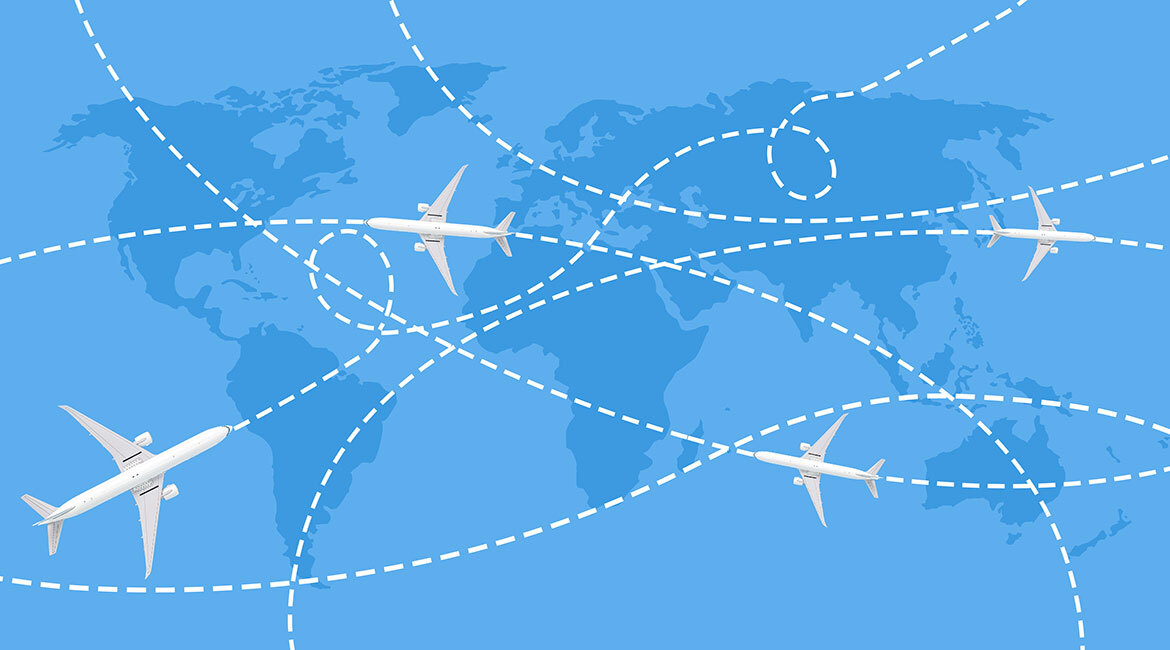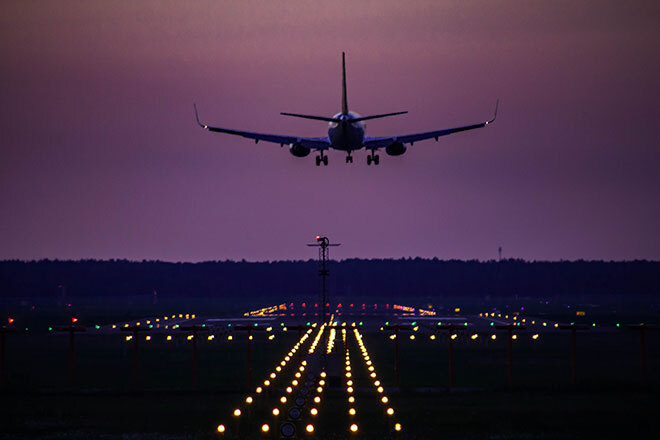
Airplanes! Georges Ghazi has been passionate about aeronautics since he was four years old. “And I would say space even say more than airplanes!” he points out.
Georges left Dakar for France to begin his studies in space engineering. However, it was during an internship in Montreal that he discovered the world of aeronautics. But why choose? He decided to pursue his studies in both aeronautics and space.
He obtained his master’s degree in electrical engineering from the École Polytechnique de Montréal in 2014, and his doctorate in aerospace engineering from the ÉTS in 2020.
During his graduate studies, Georges developed a flight simulation platform and an autopilot applied to a Cessna. The methodology he proposes is based on the combination of flight mechanics equations, automatic control concepts and a metaheuristic optimization method. The result: The quality of his research impressed the selection committee and Georges was nominated for the École Polytechnique de Montréal’ 2014 best master’s thesis award.
Making the skies a little bit greener

For his doctoral thesis, Georges Ghazi’s interest lies more in aircraft performance modeling and flight path analysis. Under the inspired supervision of professor and researcher Ruxandra Botez, Georges is developing mathematical models that take into account flight time, fuel consumption and weather conditions. This work will allow other researchers to demonstrate that it is possible to reduce the environmental impact of an airplane by optimizing its flight path or its geometric shape, and thus “make the blue sky greener,” concludes Georges Ghazi.
His first revelation: I was made to teach!
One day, while concentrating on what Gérard Pignié, professor of the guidance, navigation and control course at ESTACA in France, had just demonstrated to him, Georges had a revelation: “This is what I want to do! I want to be a good teacher like him!”
And he became one. As a tutor at ESTACA, lab instructor at Polytechnique and lecturer at the ÉTS, Georges Ghazi has been teaching since 2010. “I enjoy explaining something complex in a simple way to a varied audience. I find it a real challenge,” he says. He has a way of distilling complex issues into simple terms and encourages students to think for themselves about possible solutions. You have to be curious. “By going back and forth a little bit, you can end up with something extraordinary.”
The student community seems to value the educator in Mr. Ghazi. In fact, it has awarded him the award for best teaching assistant in aerospace engineering at École Polytechnique de Montréal three times (2016, 2017 and 2019).
It is therefore logical that he was be appointed professor in the systems engineering department at the ÉTS in 2021.
His second revelation: I am made for applied research!
Although Georges Ghazi is interested in theory, applied research is what really motivates him. Observing the direct impacts of his research, then adjusting, modifying and refining mathematical models by collaborating with companies in the aeronautics field allows the researcher to keep up with the technology, which is advancing at a staggering rate.
His work is attracting industry attention as Georges has been the recipient of several excellence grants, including one offered by PRESAGIS, a world leader in aircraft simulation modeling.

When AI boards the plane
Georges Ghazi has two projects at the forefront of his mind: making on-board computers more intelligent and autonomously steering aircraft on the ground. To do this, the aircraft must be equipped with artificial intelligence.
A self-correcting system
“During its flight hours, an airplane collides with a stream of insects, dust and pollution particles that stick to the fuselage, impairing its performance,” explains Ghazi. However, the onboard computers do not take into account the aircraft’s degradation over the years when calculating the algorithms. Ghazi’s team would like to be able to give the flight management system some artificial intelligence capability so that it can analyze what is happening over the course of the flight and correct itself.
Moving smoothly on the ground
The other research project that has Georges Ghazi and his colleagues buzzing is using the power of artificial intelligence and computer vision to guide planes on the ground from the gate to the runway without the intervention of the controller. No more planes taking the wrong taxiways, or misinterpreting communications between the pilot and the control tower.

The two essential aspects of aeronautics
Regardless of the technological advances and the type of propulsion used, two elements will always be essential on board an aircraft: flight path optimization and autopiloting.
Through his research, Georges Ghazi aims to develop mathematical models that will allow the aircraft to fly from point A to point B safely while limiting its impact on the environment.
Through his teaching, Professor Ghazi hopes to instill in his students the desire to look further, to experiment with solutions, to dare to venture beyond the known.
If an astromobile was able to land on Mars, it is because someone somewhere had the audacity to believe that it could be done.



